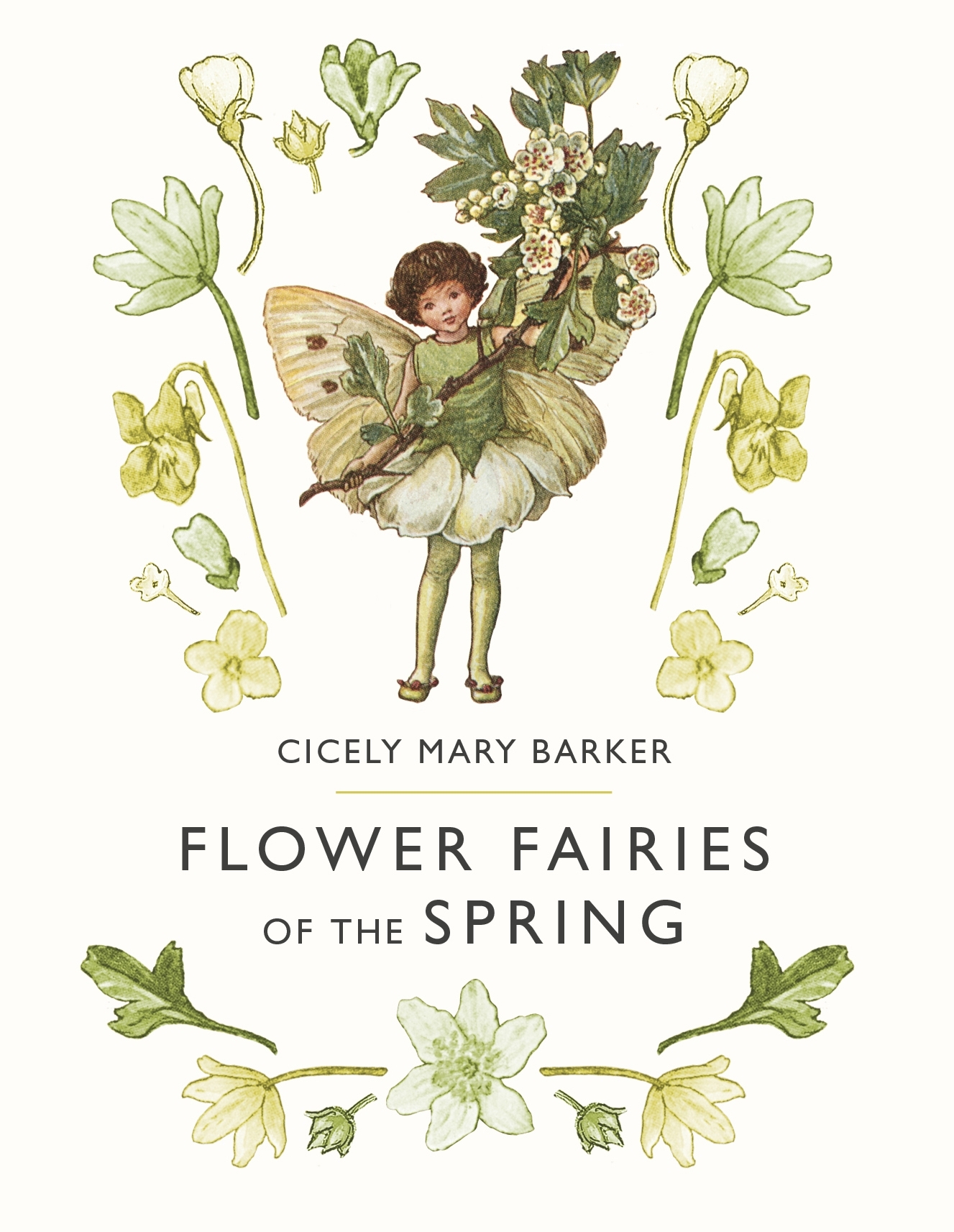

Ink ownership signature on front pastedown. Illustrated half-title and frontispiece, 24 colour plates, all by the author. Original grey decorated boards with pictorial onlay in colour, spine and front cover lettered in brown, blue illustrated endpapers. Cicely Mary Barker (1895-1973) followed up with the remaining seasons: Flower Fairies of the Summer (1925), Autumn (1926), and the posthumous Winter (1985). This poetry collection, first published in 1923, was a popular response to the interest in fairies generated by Sir Arthur Conan Doyle's The Coming of Fairies (1922). Barker was a devotee of the Pre-Raphaelites, particularly Edward Burne-Jones, and her work owes a debt to Beatrix Potter and Kate Greenaway " (ODNB). Flowers were a dominant theme in Victorian art and lietrature, as well as seeing a revival with the decorative arts adn art nouveau movements, so even though she chose to pair them alongside the more whimsical fairies, Barker also shows a shift in trends in the art world and an expansion on an established theme.An attractively illustrated children's classic, being the first book of the illustrator, whose fairy titles "remain very popular and have been collected in many anthologies.

I'm not plant expert, but Barker also seems to have chosen her specimens carefully - the poems tell us of these plants' early flowering cycles, and the brief introduction tells us how closely she worked with the staff at Kew Gardens. Some of the other flower fairy collections are dominated by green tones (more plant than flower, to be honest), but in true spring fashion Barker's first set of fairies are a riot of colours from the purple primroses to the yellow daffodils. Her poems are forgettable, but the colourful charm of the springtime flowers is instantly uplifting.

It’s very cute and now I want to collect this whole series.īursting on to the scene like Spring itself, with her bevy of spring themed flower fairies, it is no wonder that Cicely Mary Barker saw near instantaneous success. This book is a small book the size of your hand. He kept interrupting me and wanting a new story, which I made him finish this. The nephew did not like this story at all. I think she wants to believe, but she knows what other people say. She still asks me if I believe fairies are real and I always tell her, without doubt, I know they are. The niece thought this was very cute and she gave this 4 stars. If you know me, you know I love fairies and this book is perfect for me. It does not tell a story, this is a collection of poems. There is such an innocence and purity to the whole thing. This collection is lovely with delicate artwork. Each fairy has a poem about the flower and when the flower grows. It is a collection of poems from the 1920s about flowers and fairies. I found this, by chance, at the library one day and I brought this home.


 0 kommentar(er)
0 kommentar(er)
